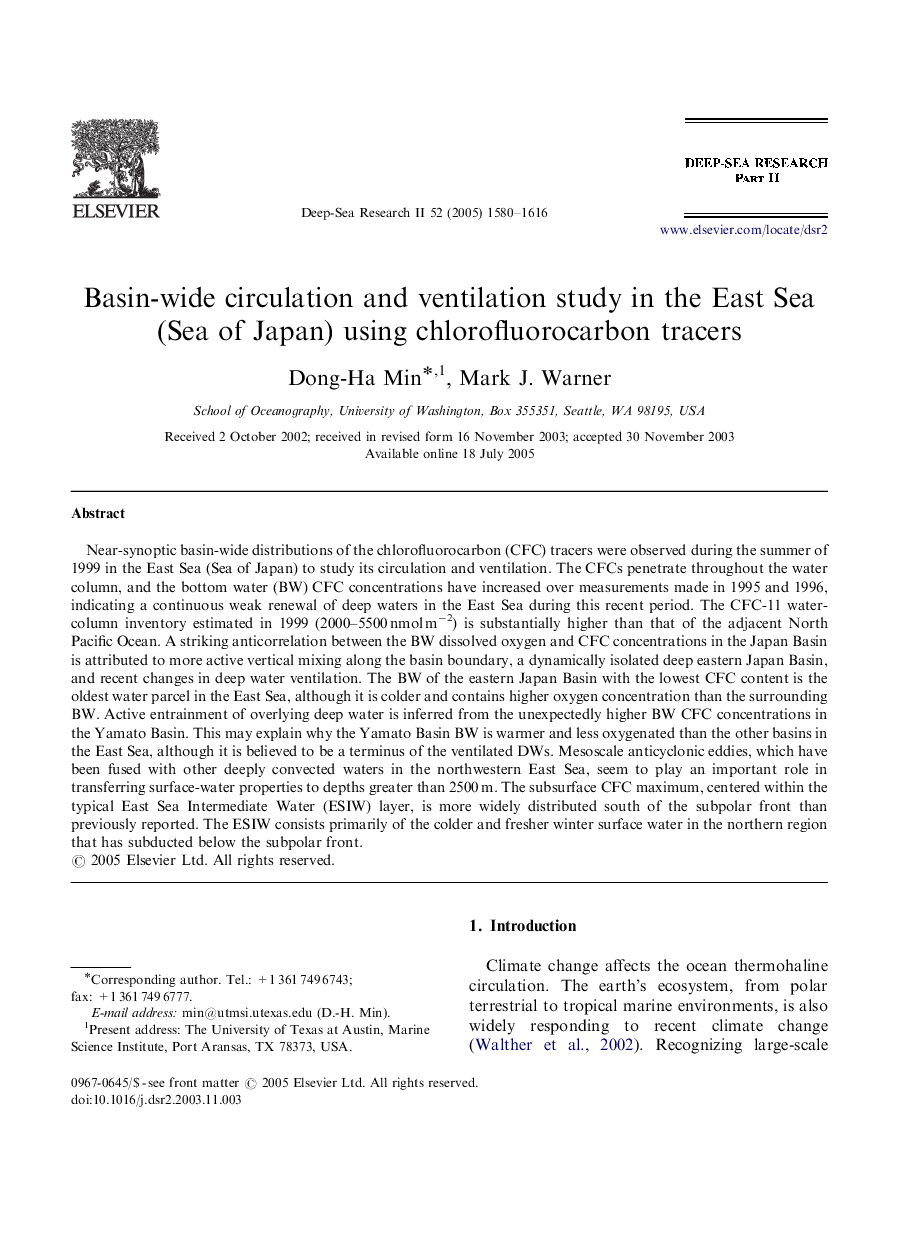| کد مقاله | کد نشریه | سال انتشار | مقاله انگلیسی | نسخه تمام متن |
|---|---|---|---|---|
| 9480091 | 1626525 | 2005 | 37 صفحه PDF | دانلود رایگان |
عنوان انگلیسی مقاله ISI
Basin-wide circulation and ventilation study in the East Sea (Sea of Japan) using chlorofluorocarbon tracers
دانلود مقاله + سفارش ترجمه
دانلود مقاله ISI انگلیسی
رایگان برای ایرانیان
موضوعات مرتبط
مهندسی و علوم پایه
علوم زمین و سیارات
زمین شناسی
پیش نمایش صفحه اول مقاله

چکیده انگلیسی
Near-synoptic basin-wide distributions of the chlorofluorocarbon (CFC) tracers were observed during the summer of 1999 in the East Sea (Sea of Japan) to study its circulation and ventilation. The CFCs penetrate throughout the water column, and the bottom water (BW) CFC concentrations have increased over measurements made in 1995 and 1996, indicating a continuous weak renewal of deep waters in the East Sea during this recent period. The CFC-11 water-column inventory estimated in 1999 (2000-5500 nmol mâ2) is substantially higher than that of the adjacent North Pacific Ocean. A striking anticorrelation between the BW dissolved oxygen and CFC concentrations in the Japan Basin is attributed to more active vertical mixing along the basin boundary, a dynamically isolated deep eastern Japan Basin, and recent changes in deep water ventilation. The BW of the eastern Japan Basin with the lowest CFC content is the oldest water parcel in the East Sea, although it is colder and contains higher oxygen concentration than the surrounding BW. Active entrainment of overlying deep water is inferred from the unexpectedly higher BW CFC concentrations in the Yamato Basin. This may explain why the Yamato Basin BW is warmer and less oxygenated than the other basins in the East Sea, although it is believed to be a terminus of the ventilated DWs. Mesoscale anticyclonic eddies, which have been fused with other deeply convected waters in the northwestern East Sea, seem to play an important role in transferring surface-water properties to depths greater than 2500 m. The subsurface CFC maximum, centered within the typical East Sea Intermediate Water (ESIW) layer, is more widely distributed south of the subpolar front than previously reported. The ESIW consists primarily of the colder and fresher winter surface water in the northern region that has subducted below the subpolar front.
ناشر
Database: Elsevier - ScienceDirect (ساینس دایرکت)
Journal: Deep Sea Research Part II: Topical Studies in Oceanography - Volume 52, Issues 11â13, June 2005, Pages 1580-1616
Journal: Deep Sea Research Part II: Topical Studies in Oceanography - Volume 52, Issues 11â13, June 2005, Pages 1580-1616
نویسندگان
Dong-Ha Min, Mark J. Warner,